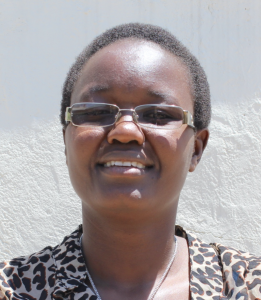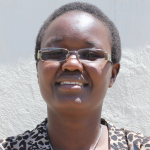Osanya spring is located in the quiet village of Indulusia, known for its sugarcane farming. The area is well vegetated, and the climate is cool with a natural breeze.
Some 100 people in Indulusia Community depend on Osanya Spring for all of their daily water needs, but the spring does not meet those needs in its unprotected state. The water from Osanya Spring is contaminated, and the access area is in an abysmal state.
Having insufficient clean and safe water in a community locks people in poverty for generations. This is because instead of using the money for productive things, like investing in their businesses, farms, or their children's education fees, people are forced to use their money in hospitals seeking care and medication for their waterborne diseases. The 100 people in Indulusia relying on Osanya Spring are no exception to this.
The lack of safe and clean water here leads to community members visiting the hospital at least once a month to be treated for typhoid due to consuming contaminated water. The medication for typhoid is incredibly expensive, and community members report, yet they risk their lives if they do not pay for it.
"We are not sure of the water we are consuming. This is because the water source is open to contamination. Sometimes I wonder if we are still living because of the spring's state," said Mr. Wycliffe Osanya, a 30-year-old farmer and the spring's landowner.
"I am now sure that your team will change our lives, after many promises that were not fulfilled by others," Mr. Osanya added optimistically.
Accessibility is the other major issue at Osanya Spring. Community members have tried to force the water to flow instead of pooling by building a wall of mud and stones in front of the spring's source. They then inserted a plastic jug with the bottom cut out to force the water through its bottleneck.
But this makeshift system misses a lot of water the spring produces, slowing the fill time for each person's jerrycan. Because of the spring's low-to-the-ground eye, they could not build the wall very high without doing a significant excavation of the area, which they do not have the tools or expertise to do. As a result, the jug sits close to the ground below it, and only small jugs and teapots can be placed directly below its flow. People must then transfer the small amount of water they collect with these first containers and pour it into their larger jerrycans.
The mud and rock wall sometimes fall, especially during the rainy season when there are many washouts. The spring area is always muddy and wet, requiring people to stand in the pool of water below the jug while they fetch water. Regardless of the season or circumstance at the spring, however, fetching water here is extremely time-consuming and frustrating. It only gets worse as lines form when everyone needs water simultaneously for their daily routines, wasting more of their productive hours.
"Having access to clean and safe water is a blessing, but children here have suffered a lot because fetching water from the source that is open is very risky. Sometimes we cannot fetch water because we fall and injure ourselves every time," reported teenager Lillian.
What We Can Do:
Spring Protection
Protecting the spring will help provide access to cleaner and safer water and reduce the time people have to spend to fetch it. Construction will keep surface runoff and other contaminants out of the water. With the community’s high involvement in the process, there should be a good sense of responsibility and ownership for the new clean water source.
Fetching water is a task predominantly carried out by women and young girls. Therefore, protecting the spring and offering training and support will help empower the female members of the community by freeing up more of their time and energy to engage and invest in income-generating activities and their education.
Training on Health, Hygiene, COVID-19, and More
To hold training during the pandemic, we work closely with both community leaders and the local government to approve small groups to attend training. We ask community leaders to invite a select yet a representative group of people to attend the training, which will then act as ambassadors to the rest of the community to share what they learn. We also communicate our expectations of physical distancing and wearing masks for all who choose to attend.
The training will focus on improved hygiene, health, and sanitation habits in this community. We will also have a dedicated session on COVID-19 symptoms, transmission routes, and prevention best practices.
With the community’s input, we will identify key leverage points to alter their practices at the personal, household, and community levels to affect change. This training will help ensure participants have the knowledge they need about healthy practices and their importance to make the most of their water points as soon as the water is flowing.
Our team of facilitators will use a variety of methods to train community members. Some of these methods include participatory hygiene and sanitation transformation, asset-based community development, group discussions, handouts, and demonstrations at the spring.
One of the most important issues we plan to cover is handling, storing, and treating water. Having a clean water source will be extremely helpful, but it is useless if water gets contaminated by the time it is consumed. The community and we firmly believe that all of these components will work together to improve living standards here, which will help to unlock the potential for these community members to live better, healthier lives.
We will then conduct a small series of follow-up training before transitioning to our regularly scheduled support visits throughout the year.
Training will result in the formation of a water user committee, elected by their peers, that will oversee the spring's operations and maintenance. The committee will enforce proper behavior around the spring and delegate tasks that will help preserve the site, such as building a fence and digging proper drainage channels. The fence will keep out destructive animals and unwanted waste, and the drainage will keep the area’s mosquito population at a minimum.

 Protected Spring
Protected Spring
 Rehabilitation Project
Rehabilitation Project













































